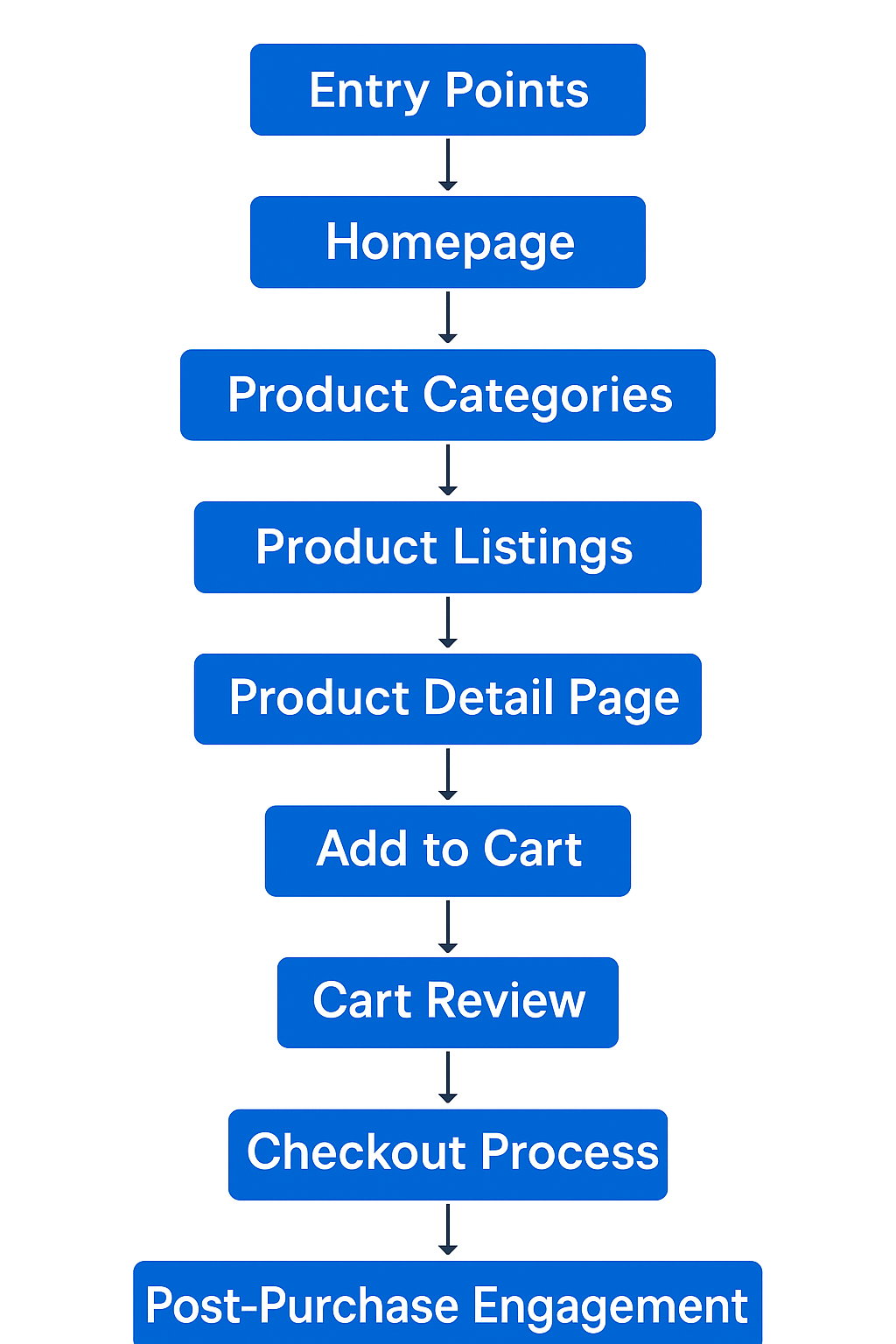How Luxury Brands Collect Client Information
how luxury brands collect client information is a multifaceted journey that combines tradition with innovation. By mastering the art of...
A local bakery pours $10,000 into redesigning their website. The result? A visual masterpiece—sleek animations, minimalist menus, mouthwatering hero images. But six months later, sales haven’t budged. The owner is baffled: “How can something so beautiful fail so badly?”
Sound familiar?

While UX design is undeniably critical—shaping how users navigate, interact, and feel on your site—it’s just one ingredient in the recipe for online success. A flawless user experience means little if no one can find your site, trust your brand, or act on your offers.
In this post, we’ll unpack why even the most intuitive, aesthetically pleasing designs fall flat without:
…and the methods to turn eye-catching design into genuine revenue.
If you’ve ever asked yourself, “Why aren’t my visitors converting?” or “Why do people leave despite praising my site’s look?”—this guide is for you. Let’s uncover the true drivers that transform mere clicks into paying customers.
1.1. What “Good Design” Means in Today’s Market
Today, “good design” has come to mean more than just attractive visuals. Modern users expect interfaces that are intuitive, accessible, and responsive across devices. Good design minimizes cognitive load—clear navigation labels, consistent iconography, and predictable interaction patterns let users focus on content rather than figuring out how the site works. It also establishes an emotional connection: thoughtful micro-animations, deliberate use of white space, and a cohesive style guide help a brand feel polished and trustworthy. However, even when you check all the UX boxes, you’re only solving for how people experience your site, not why they came in the first place.

1.2. Common Misconceptions: Design = Conversion
A widespread belief holds that if you build it beautifully, they will come—and stay. Business owners often assume that a slick interface automatically boosts sales. In reality, conversions hinge on a chain of events: discovery (can people find you?), relevance (does your offer meet their needs?), trust (do they believe you’ll deliver?), and finally, simplicity (is it easy to complete the purchase?). While design can lower friction in the last step, it does nothing for the first three. No amount of parallax scrolling or hover effects will rank your site on page one of Google, answer a prospect’s burning question, or overcome price objections on its own.
1.3. Case Study: A Beautifully Designed Site with Low Sales
Consider “Artisan Bakes Co.,” which invested heavily in a site revamp: full-page hero carousels of croissants, a minimal color palette, and seamless scroll-triggered animations. Despite rave comments from friends and local press about the site’s “gorgeous look,” traffic remained flat and online orders stalled. A follow-up audit revealed the gaps: no on-page SEO targeting local “bakery near me” keywords, generic product descriptions lacking benefit-focused copy, slow image-heavy pages that frustrated mobile users, and no review or trust signals to reassure first-time buyers.
Takeaway: UX alone can’t compensate for gaps in strategy, content, performance, or credibility. A design-first mindset risks creating a digital showroom with empty aisles—visitors may admire the décor, but without clear directions to the checkout, they’ll simply walk away.

2.1. The Role of UX in Reducing Friction
At its core, UX is about smoothing the path between a visitor’s intent and their goal. Thoughtful information architecture guides users to the right page in two clicks instead of five. Clear calls-to-action and feedback (e.g., button states, progress indicators) keep them informed about where they are in a process. Streamlined forms—prefilled fields, inline validation, and logical grouping—minimize the effort required to convert. These improvements reduce abandonment by removing “stumbling blocks” that frustrate or confuse, making interactions feel effortless and intuitive.
2.2. Where UX Excels: Usability, Accessibility, Satisfaction
Usability: Well-defined navigation, consistent layouts, and predictable interactions help users accomplish tasks quickly.
Accessibility: Proper color contrast, keyboard navigation support, and semantic HTML ensure that people of all abilities can access content.
Satisfaction: Micro-interactions (hover effects, subtle animations), personalized touches, and aesthetic consistency delight users, reinforcing positive brand perceptions and encouraging repeat visits.
Together, these strengths build a foundation of trust and ease—without them, even the most compelling offer can feel painful to redeem.
2.3. Where UX Falls Short: Motivating Action, Driving Awareness
While UX can remove barriers, it doesn’t by itself create desire or visibility. It won’t craft the perfect headline to hook a prospect in a search result, nor will it engineer the clever ad campaign that piques curiosity on social media. UX doesn’t decide which keywords to target for SEO, shape your value propositions, or inject persuasive storytelling into product descriptions. Moreover, design tweaks alone seldom influence pricing objections or overcome deep-seated purchase hesitations. In short, UX sets the stage for conversion—but without strategic outreach and compelling messaging to fill the seats, the theater remains empty.

Before a great UX can do its work, you need people on your site. Driving qualified traffic lays the groundwork for conversions—no visitors means no sales, no matter how seamless your interface.
3.1. SEO: Optimizing for Discoverability
Search Engine Optimization ensures your site appears when prospects search for relevant terms. On-page tactics like keyword-rich headings, optimized meta descriptions, and semantic HTML help Google understand your content. Technical SEO—fast page loads, mobile-friendly layouts, secure HTTPS, and a logical URL structure—signals reliability to both users and crawlers. Finally, off-page efforts such as earning backlinks from reputable sites boost your domain authority, moving you up the rankings and putting your bakery (or any business) in front of hungry local searchers.
3.2. Content Marketing: Attracting and Educating Prospects
Valuable content draws visitors organically and keeps them coming back. A blog post on “5 Secrets to the Perfect Sourdough” or a downloadable guide to hosting the ultimate backyard brunch positions you as an expert, answers real questions, and builds trust even before you ask for a sale. Regularly updated content also fuels social shares, newsletter growth, and internal linking—all of which contribute to stronger SEO and higher engagement.
3.3. Paid Media & Social: Reaching New Audiences
Organic reach takes time; paid channels accelerate visibility and target specific demographics. Google Ads can capture high-intent searchers (“order custom birthday cake near me”), while Facebook and Instagram ads allow image-driven storytelling to engage users based on interests, behaviors, or lookalike audiences. Retargeting campaigns remind past visitors about abandoned carts or seasonal promotions, pulling them back into the purchase funnel. By combining paid and organic tactics, you ensure a steady, diverse flow of traffic that your UX can then convert.

Once you’ve driven qualified visitors to your site and delivered a seamless UX, the final hurdle is convincing them to take action. Conversion Rate Optimization (CRO) is the disciplined process of using data and experimentation to turn browsers into buyers.
Why it matters:
Small changes can yield outsized gains—but you won’t know which tweaks work without controlled experiments.
Key tactics:
Example:
A retail site tested two versions of its product page: one with a long-form description, another with bullet-point benefits. The bullet-point version outperformed by 17%, lifting overall revenue without redesigning the template.
Why it matters:
Users read as little as 20% of the text on a page. Every word must earn its place, guiding prospects toward conversion.
Key tactics:
Actionable tip:
Use the Pascal’s Wager technique: present the upside of acting now versus the downside of missing out to heighten motivation.
Why it matters:
Even with flawless UX, visitors hesitate if they’re unsure your site is credible or secure.
Key tactics:
Stat:
Adding trust badges to checkout pages can increase conversions by up to 42%.
Takeaway:
CRO bridges the gap between “nice to have” and “must buy.” By systematically testing, refining your messaging, and embedding trust signals, you ensure that every visitor who reaches your beautifully designed site has every reason—and every ease—to become a customer.
5.1. Page Speed’s Impact on Bounce Rate and SEO
5.2. Mobile Performance and Responsive Design Considerations
5.3. Uptime, Error Handling, and the User’s Trust
Automated rollback: Implement CI/CD pipelines that can instantly revert a bad deploy to maintain availability.
6.1. Cross-Channel Consistency: Design, Messaging, Tone
6.2. Lead Nurturing Funnels: Email, Retargeting, and CRM Integration
6.3. Sales Feedback Loops for Continual Improvement
Takeaway: Technical excellence and cross-functional alignment turn a pretty website into a performant, persuasive sales engine. By ensuring your site loads fast, stays live, and delivers consistent messaging—while nurturing and learning from prospects at every stage—you create a self-reinforcing loop of growth and continuous improvement.
7.1. Key Metrics Beyond UI Engagement
Focusing solely on clicks and time on page misses the bigger picture. Track metrics that reflect business health and customer value.
7.2. Heatmaps, Session Recordings, and User Surveys
Qualitative data reveals why users behave the way they do. Layer these insights onto your quantitative metrics to diagnose friction points.
7.3. Iterative Cycles: Testing, Learning, and Optimizing
Continuous improvement isn’t a luxury—it’s a necessity. Adopt a build-measure-learn mindset to keep your site evolving alongside user expectations and market shifts.
Takeaway: Analytics and feedback close the loop between design, marketing, and sales. By tracking the right business-centric metrics, uncovering user motivations, and iterating relentlessly, you turn your site into a living growth engine—always improving, never static.
8.1. Company A: Brilliant Redesign but No Traffic Growth
8.2. Company B: Modest Design Updates Paired with Aggressive CRO Saw 35% Lift
8.3. Takeaways: Why a Holistic Approach Wins
Measure What Matters: Track both UX metrics (bounce rate, task completion) and business KPIs (CAC, LTV, conversion rate) to connect design decisions to bottom-line impact.
Recap:
UX design lays the groundwork for a seamless, enjoyable experience—but it’s only one pillar of online success. To transform a pretty interface into a profitable platform, you need a coordinated strategy that brings together traffic generation, compelling content, technical performance, trust-building, and rigorous analytics.
Grab your site’s analytics dashboard and run a quick audit:
Identify one “low-hanging fruit” in each category and tackle it this week.
Final Thought:
Sustainable online success isn’t achieved by a single masterstroke—it’s built through the ongoing alignment of design, strategy, and data. When all elements reinforce each other, clicks become customers, and customers become loyal advocates. Make every piece count, and watch your growth accelerate.
For deeper insights into how SEO complements luxury branding, check out our article on luxury web design and SEO.
how luxury brands collect client information is a multifaceted journey that combines tradition with innovation. By mastering the art of...
For small business owners and luxury brand professionals, crafting personalized experiences, building trust, and emphasizing exclusivity are key to success....
Creating your own path is about embracing individuality, making intentional choices, and stepping away from the conventional to leave a...
AI cannot autonomously create entirely new algorithms in the way humans can invent new concepts. However, it can assist in...
Combining web design and SEO is essential for businesses looking to create a successful online presence. Web design ensures a...
We use cookies and similar technologies to enhance your browsing experience and optimize our services. By consenting, you allow us to process data such as browsing activity and unique identifiers on this site. Choosing not to consent or withdrawing consent may limit some site functionalities and features.